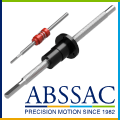
Posted to News on 14th Nov 2008, 22:08
How machine builders can benefit from multicore technology
Jon Severn, Editor of MachineBuilding.net, met Javier Gutierrez, Product Manager for the National Instruments LabVIEW Simulation and Control Design Tools, at the NIDays Conference in London on 4 November 2008, where they discussed the use of multicore processors in machines.

At the time of writing (November 2008), dual-core processors are commonplace in laptop PCs, quad-core processors are offered in high-end desktop PCs, and even industrial computers are now available with dual-core or quad-core processors. Multi-core processors are now a reality, and it is up to machine designers to make the most of this technology.
Javier Gutierrez believes there are several reasons why machine builders will want to utilise multi-core processors: "Machines are getting far more complex, and the demand for better performance means that advanced control techniques are being adopted. So instead of relying on traditional PLCs and PID controls, machine builders need to use higher-performance control hardware and software."
Furthermore, whereas a few years ago Windows was not favoured for real-time machine applications, the later evolutions of this operating system have proven themselves to be far more robust and capable of operating in an industrial environment. There are also other credible real-time operating systems that can be implemented on industrial PCs if preferred.
How to program for multithreading?
Being able to buy off-the-shelf multi-core hardware is one thing, but the challenge has, in the past, been how to program applications to take advantage of multithreading. Gutierrez explains that LabVIEW 8.6 provides a user-friendly platform for this purpose: "LabVIEW 8.6 delivers new tools to help engineers and scientists take advantage of the benefits of multicore processors, field-programmable gate arrays (FPGAs) and wireless communication." To make good use of these technologies engineers would previously have had to work with multiple tools that are not designed for parallel programming. However, LabVIEW 8.6 provides a single platform for control system when working with multicore processors and high-performance FPGA-based advanced control and embedded applications. With multicore IPCs now readily available, Gutierrez believes that embedded multicore technology is inevitable, though probably about two years away.
The tremendous ease of use associated with graphical programming - as against programming in languages such as C - means that engineers who have an essentially mechanical background can now implement their own control systems, without having to call upon the services of a colleague or contractor with control programming expertise.
Building control systems in a graphical environment
So while many engineers still persist in perceiving National Instruments as a company specialising in data acquisition, and LabVIEW as a software platform for data virtual instrumentation, the reality is that LabVIEW is now a powerful tool that is equally suitable for control applications. Furthermore, multithreading capability is inherent in LabVIEW 8.6, and the graphical user interface makes it very intuitive to develop applications for multicore processors. This means, for example, that control functions can be set to operate via one processor while measurement functions are handled by another. Interestingly, the NI Vision Development Module for LabVIEW 8.6 automatically distributes data sets across multiple cores to enable powerful and innovative image processing functions to be performed.
Gutierrez acknowledges that one of the reasons why graphical programming is not being taken up as quickly by machine designers as in other sectors is that machine designers are familiar with programming PLCs using ladder logic, which is not available from National Instruments. Ease of use has not, in itself, proved sufficient to persuade practicing engineers to migrate from ladder logic to graphical programming, which is one reason why NI is so heavily involved in education. By enabling undergraduates to experience the ease of use and power of graphical programming, it is hoped that they will choose to use this approach when they are employed in industry. And it should not be forgotten that NI's LabVIEW is the power behind Lego Mindstorms NXT, with which children can program Lego robots in a graphical environment.
NI's strategy of exposing students to graphical programming appears to be paying off. Gutierrez says: "This is one of the factors behind NI penetrating the industrial market faster than any other. A further factor is, of course, the range of hardware and software that NI offers these markets, which has developed substantially in the last two to three years. If you look at some of the recent industrial application stories, NI simply would not have had the capability for these a few years back." For example applications, see CompactRIO moves wet concrete better than PLC and PID and Aerial robot uses wireless link to transfer sensor data.
Ethernet - the new USB
Alongside the use of multicore processors, another technological trend that Gutierrez is keen to highlight is the widespread adoption of Ethernet. He uses the analogy of USB, the Universal Serial Bus: "USB was conceived for the connection of hot-swappable plug-and-play PC peripherals - such as mice, keyboards, scanners and printers - but its ease of use and versatility have resulted in it being used today for a much wider range of products, from desktop fans to data acquisition devices. Ethernet is far from ideal for many of the applications for which it is used today, but so many people want to it that variants are now available for hard real-time applications, safety-critical applications, and for other specialised tasks in the industrial environment."
Indeed, one of the presentations at NIDays 2008 was entitled Ethernet-based Industrial Communication Protocols: Connect LabVIEW to PLCs. This presentation by Mike Bailey, an NI Systems Engineer, looked at why engineers want to use Ethernet-based protocols, gave an overview of four Ethernet-based industrial protocols (Modbus TCP/IP, EtherNet/IP, EtherCAT and PROFInet), showed how to add deterministic I/O to NI's programmable automation controller (PAC) hardware, and discussed connecting NI devices to various industrial protocols. The presentation, together with other presentations from NIDays, can be downloaded as a PDF from the NIDays 2008 page on National Instruments' website (registration is required, but is free).
Jon Severn ([email protected])
* Use the form on this page to request a callback or more information about NI products and services.
National Instruments Corporation (UK) Ltd
Measurement House, Newbury Business Park
London Road
RG14 2PZ
UNITED KINGDOM
+44 (0)1635 523545

































